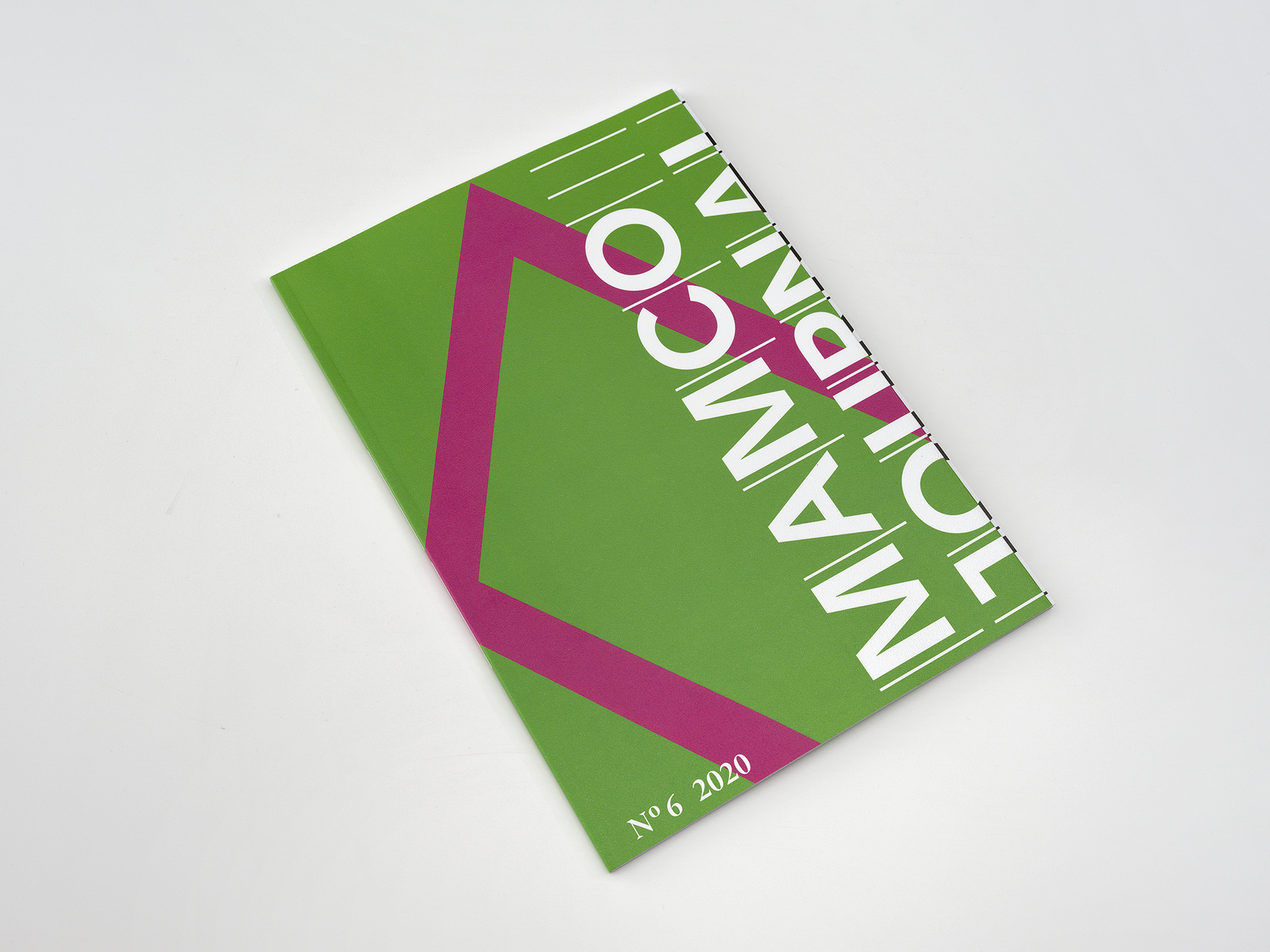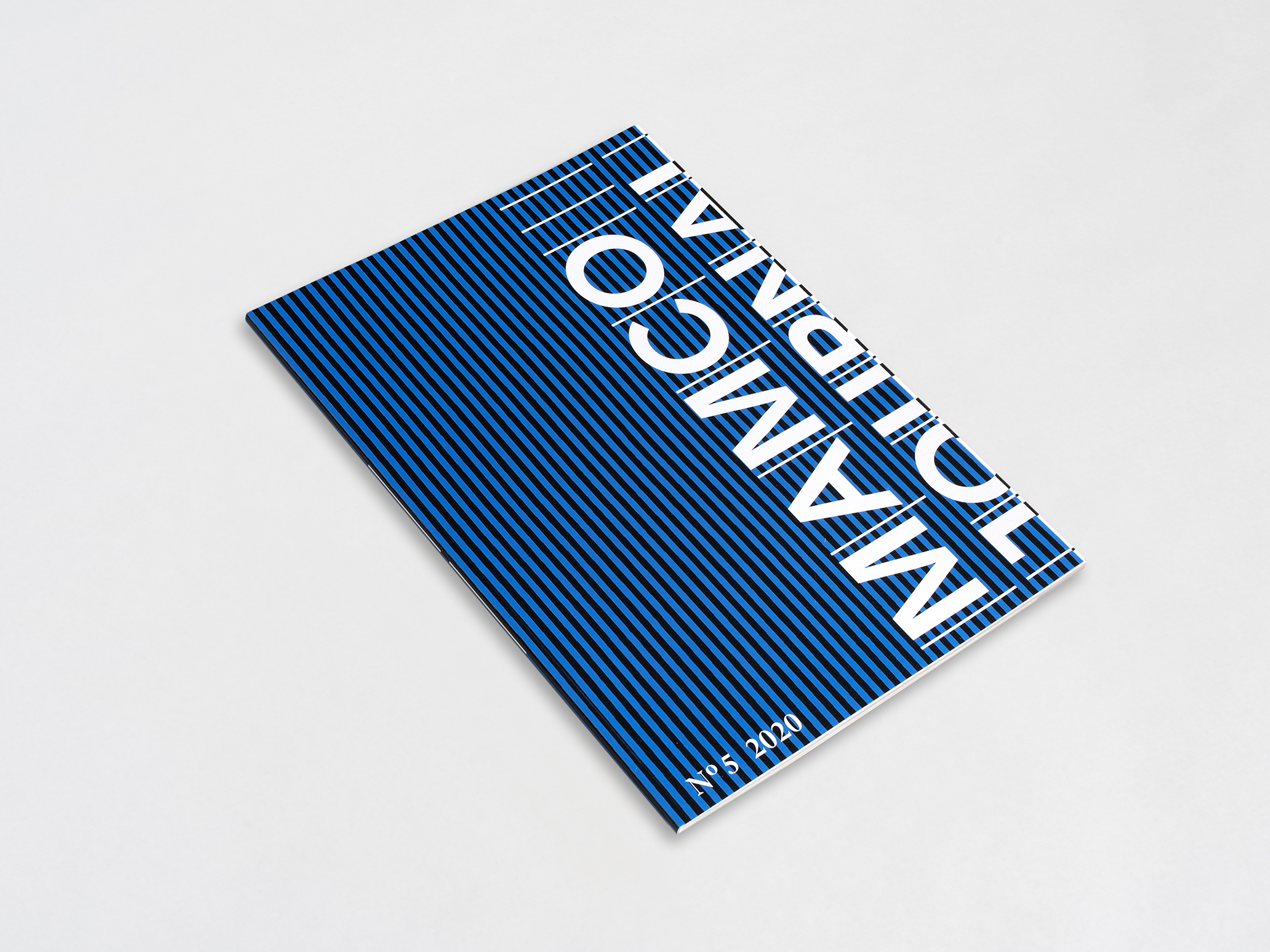N°6

Since March of this year, the COVID-19 crisis and the measures aimed at combating it have profoundly affected MAMCO’s programming and operations. For months, we were prevented from carrying out our main mission of receiving the public. Even now, our planned activities are in constant flux. And going forward, we will have to rethink how we work, as societal changes force us to shift our priorities and put in place measures to lessen the impact of the crisis.
From the start, we aimed to honor our commitments to our artists, employees, and partners. We postponed projects until next year rather than canceling them; extended our “plural retrospective” of Olivier Mosset; and kept our guards, guides, and assistants on the payroll.
Our next step was to focus our efforts on our permanent collection. After completing a full inventory last year, we are now checking that inventory and digitizing the collection. Since July, half of these works have been available to view online, and we will continue adding more over the coming months. Early next year, we plan to invite the public to rediscover the collection in the form of a physical “inventory” by all of MAMCO’s curators, using a plural methodology that reflects the spirit in which the collection was assembled. The exhibition will feature works not often shown since being acquired by MAMCO, as well as some that have always been an important part of our visitors’ experience. The displays will be organized historically or thematically and interspersed with galleries dedicated to individual artists.
The current crisis will undoubtedly cause people to reassess the role of museums in today’s society. This pandemic has tested the way we live together: we have clearly entered a new era in terms of human relations and political mechanisms. It’s only natural to feel a certain apprehension— astonished at the media’s willingness to toe the political line, anxious at the closing of borders that took so long to open, and alarmed at governments’ attempts to link surveillance and protection. It is not unreasonable to fear that, for society itself, “winter is coming.”
Besides these foreboding signs, how- ever, there is also reason to hope we can improve our relationship to a rapidly globalized world. Next fall, we will reintroduce the public to landmark works of critical thought on the systems of government and media control that have pervaded our lives for decades. We plan to highlight the aesthetic and political practice of artists such as Tony Conrad, and we invited Julia Scher to recreate a selection of her 1980s installations.
Above all, we at MAMCO will fundamentally rethink our modus operandi, our international and regional dialectics, and the environmental impact of our work. We are currently drafting a charter of practices and objectives that will clarify our position and responsibilities vis-à-vis a wide range of issues, including sustainable develop- ment, artist compensation, and accessible programming.
Every crisis lays bare underlying—and sometimes longstanding—tensions, and has the potential to redefine the power relations inherent in our actions. Let us take advantage of today’s crisis to strengthen our standing as an institution, as a collective, and as individuals brought together by a common goal.
N°5

How to tell the story of the art made
in the time that separates us from the
immediate aftermath of World War II? This
question lies at the heart of the exhibitions
presented at the museum since 2017. The
answer we have formed involves shaping
new narratives for each cycle of exhibitions,
and a focus on a syntaxic mode for the
organization of these shows.
The early 2000s have been marked by radical questioning of the museum’s “discourse” (challenging the “modernist canon,” marking the emergence of world art history and the development of an experience-based exhibitions policy). But at the same time, we do not want to abandon what makes a place like MAMCO unique: its contribution to the framing of a history of art that obeys no logic beyond that of the works themselves. And in contrast to many spaces that have adopted a thematic or trans-historical approach to the organization and presentation of the complex artistic practices of recent decades, we seek to showcase that complexity—and to acknowledge and articulate its historical contexts. In presenting works of art that continually evade the simple communication of “something,” we prefer not to subsume them into vague groupings and categorizations, but to construct narratives that underscore their specific characteristics and pinpoint the circumstances out of which they emerged.
In the first semester of 2020, this narrative approach informs a retrospective of Olivier Mosset—an exhibition that also, inevitably, surveys the five decades traversed by his oeuvre. From 1950s Nouveau Réalisme to the monumental formats produced in the 2000s; from the deconstruction of painting enacted with Daniel Buren, Michel Parmentier, and Niele Toroni in the 1960s to the “Neo-Geo” moment of the 1980s (through his dialogues with Steven Parrino, Sherrie Levine, and Cady Noland) and to his collaborations with John Armleder and Sylvie Fleury under the banner of AMF in the 1990s. As an artist who has often claimed kinship with Cézanne’s concept of “truth in painting,” his practice springs above all from the critique of painting, first as an object and sign made by an author, then as an “original” production, and lastly, as a practice indexed to its relationship to the world.
While the exhibitions scheduled for our fall season (including Tony Conrad, featured in this edition of the Journal) explore the relationship between the image and forms of societal control, our summer exhibition presents an innovative modus operandi.
Based on the concept of an annual “special edition,” borrowed from the world of magazines or biennales, the aim is to bring together diverse practices connected by nothing but the fascination they exert on us. Our summer program will also feature talks, performances, and off-site events, developed in collaboration with other institutions and organizations: a new approach to experience summer in Geneva, which we aim to review and revise each year, together with changes to our opening times, a pop- up bar, a focus on a wider range of creative disciplines, and more.
Titled simply été 2020, the program represents a new way of thinking about our collection (and how it grows, is exhibited, and communicated), a chance to experiment with the concept of the museum as a place of “experiences,” and to re-think ways to showcase new talent, support and collaborate with artists across a broader timescale than that of the “basic” exhibition. We will also be exploring alternative ideas around artistic networking and community through the various extensions and ramifications of each project. It is of course no accident that this new work method coincides with the planned renovation of the MAMCO building, in association with the City of Geneva: we are preparing for the future by redefining and experimenting with the future contours of the museum, once it will have secured the setting and means it deserves.